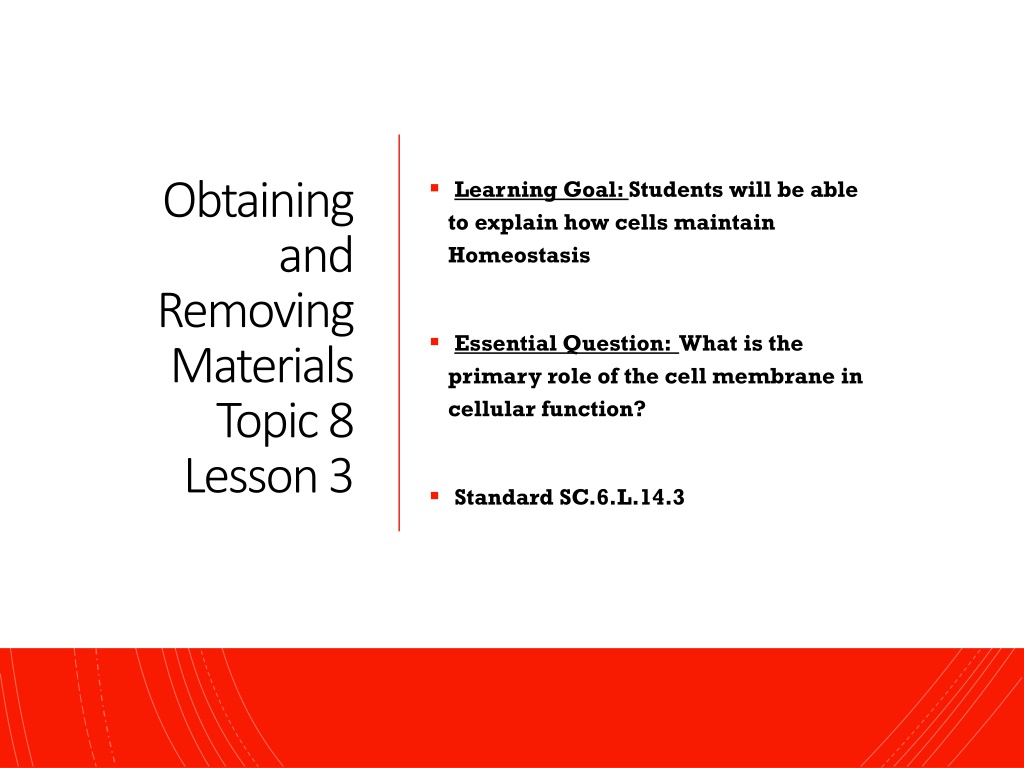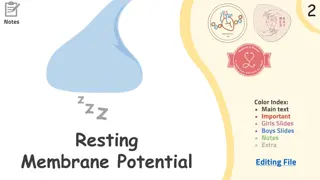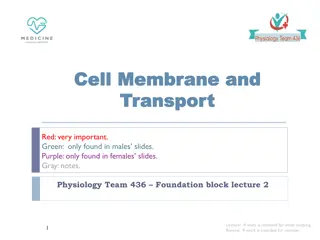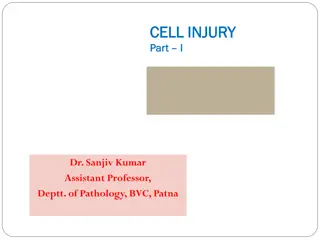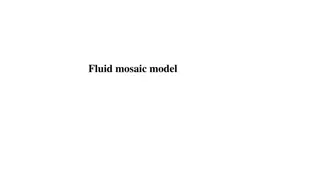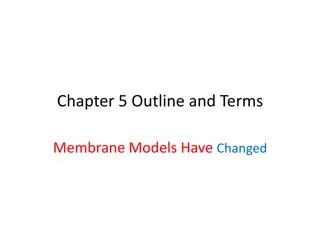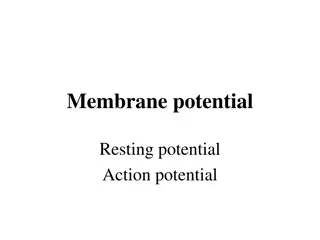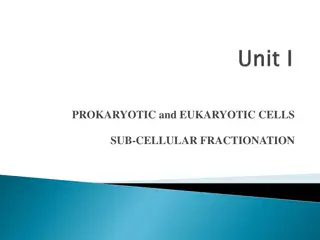Understanding Cell Membrane: Maintaining Homeostasis in Cells
Cells maintain homeostasis to function effectively. The cell membrane plays a crucial role in this process by regulating material exchange, separating the cell from its environment, and ensuring internal balance. Understanding how cells exchange materials through the membrane is key to comprehending cellular function.
Download Presentation

Please find below an Image/Link to download the presentation.
The content on the website is provided AS IS for your information and personal use only. It may not be sold, licensed, or shared on other websites without obtaining consent from the author. Download presentation by click this link. If you encounter any issues during the download, it is possible that the publisher has removed the file from their server.
E N D
Presentation Transcript
Learning Goal: Students will be able to explain how cells maintain Homeostasis Obtaining and Removing Materials Topic 8 Lesson 3 Essential Question: What is the primary role of the cell membrane in cellular function? Standard SC.6.L.14.3
Essential Question: What is the primary role of the cell membrane in cell function? Stayin Alive What is homeostasis? Homeostasis is the maintenance of a constant internal state in a changing environment. Homeostasis ensures that cells can obtain and use energy, make new cells, exchange materials, and eliminate wastes in a changing environment.
Essential Question: What is the primary role of the cell membrane in cell function? Unicellular organisms exchange materials directly with the environment. Multicellular organisms have systems that transport materials to cells from other places within the organism. Examples: The cardiovascular system in humans and xylem and phloem in plants are transport systems. Homeostasis
Essential Question: What is the primary role of the cell membrane in cell function? How do cells exchange materials?
How do cells exchange materials? Cell Membrane and Cell Wall: ALL cells have a cell membrane made of proteins and lipids protein channel Layer 1 Cell Membrane Layer 2 protein pump lipid bilayer SOME cells have cell membranes andcell walls ex: plants, fungi and bacteria Cell Membrane Cell Wall
Essential Question: What is the primary role of the cell membrane in cell function? Function of the Cell Membrane: Cell membrane separates the components of a cell from its environment surrounds the cell Gatekeeper of the cell regulates the flow of materials into and out of cell selectively permeable Cell membrane helps cells maintain homeostasis stable internal balance
How do cells exchange materials? Passive Transport Weeee!! ! cell Does NOT use energy 1. Diffusion 2. Osmosis high low Active Transport cell does use energy 1. Endocytosis 2. Exocytosis This is gonna be hard work!! high low
Diffusion is the movement of small particles across a selectively permeable membrane until equilibrium/balance is reached. These particles move from an area of high concentration to an area of low concentration. outside of cell inside of cell
Essential Question: What is the primary role of the cell membrane in cell function? How do cells exchange materials? At some point, the movement of tea out of the bag stops or slows down considerably. Why?
Osmosis is the diffusion of water through a selectively permeable membrane Water diffuses across a membrane from an area of high concentration to an area of low concentration. Semi-permeable membrane is permeable to water, but not to sugar
Active Transport Active transport is the movement of molecules from LOW to HIGH concentration. Energy is required. Proteins in the cell help with this movement Ex: Body cells must pump carbon dioxide out into the surrounding blood vessels to be carried to the lungs for exhale. Blood vessels are high in carbon dioxide compared to the cells, so energy is required to move the carbon dioxide across the cell membrane from LOW to HIGH concentration. Carbon Dioxide molecules outside of cell inside of cell
ANALOGY: NO ENERGY NEEDED: Diffusion Osmosis ENERGY NEEDED: Active Transport
Endocytosis and Exocytosis is the method used for very large molecules (such as food and wastes) get into and out of the cell Food is moved into the cell by Endocytosis Wastes are moved out of the cell by Exocytosis
How do organisms maintain homeostasis? Cells and whole organisms must work to maintain homeostasis in a constantly changing environment. Some animals adapt their behavior to control body temperature. Trees can show seasonal responses to changes in the environment.
